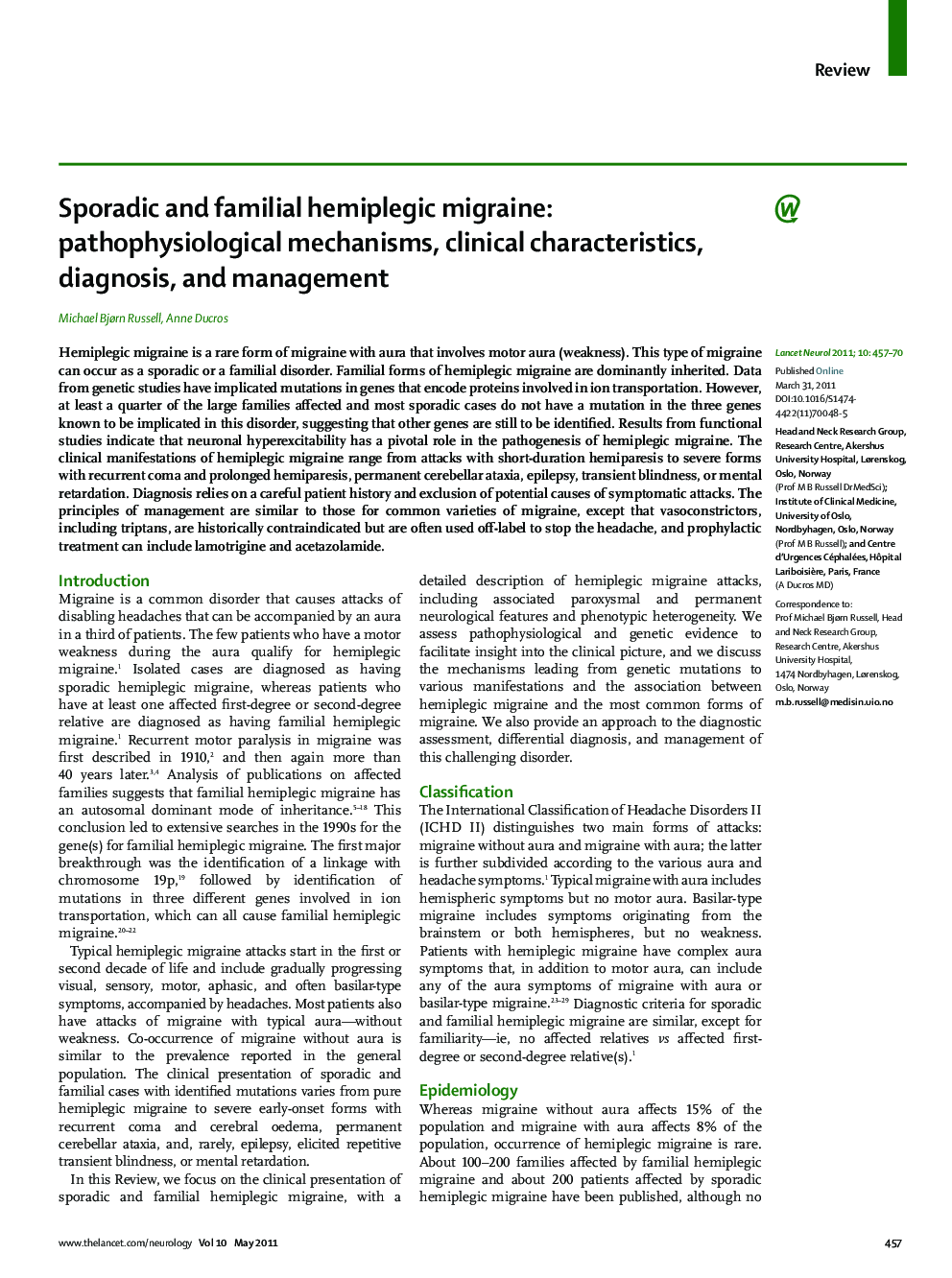| Article ID | Journal | Published Year | Pages | File Type |
|---|---|---|---|---|
| 3066850 | The Lancet Neurology | 2011 | 14 Pages |
SummaryHemiplegic migraine is a rare form of migraine with aura that involves motor aura (weakness). This type of migraine can occur as a sporadic or a familial disorder. Familial forms of hemiplegic migraine are dominantly inherited. Data from genetic studies have implicated mutations in genes that encode proteins involved in ion transportation. However, at least a quarter of the large families affected and most sporadic cases do not have a mutation in the three genes known to be implicated in this disorder, suggesting that other genes are still to be identified. Results from functional studies indicate that neuronal hyperexcitability has a pivotal role in the pathogenesis of hemiplegic migraine. The clinical manifestations of hemiplegic migraine range from attacks with short-duration hemiparesis to severe forms with recurrent coma and prolonged hemiparesis, permanent cerebellar ataxia, epilepsy, transient blindness, or mental retardation. Diagnosis relies on a careful patient history and exclusion of potential causes of symptomatic attacks. The principles of management are similar to those for common varieties of migraine, except that vasoconstrictors, including triptans, are historically contraindicated but are often used off-label to stop the headache, and prophylactic treatment can include lamotrigine and acetazolamide.
